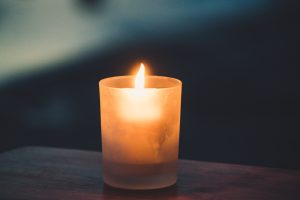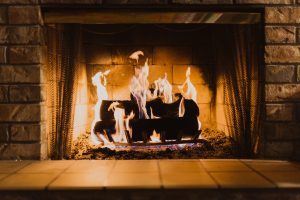You might think your home’s air is clean, but there are significant risks to not managing it. Here are ten hidden sources of air pollution in your home and how to remove them.
1. Cleaning Products
Cleaning products help keep your home shining, but many contain volatile organic compounds (VOCs) that are dangerous for your lungs. Though not harmful in solid form, VOCs become toxic as a gas, making some aerosols especially dangerous. They can cause mild symptoms like throat, eye, and nose irritation, headaches, and nausea. VOCs can also damage your liver, kidneys, and central nervous system.
Eliminating VOCs
You can reduce your VOC exposure by using cleaning products made from natural ingredients when possible. Cleaning porous surfaces can remove VOCs from them.
2. Candles
Candles smell good and can help you relax but can harm you. Whenever you burn something, soot carbon particles enter the air, which can aggravate your respiratory system. Acrolein is a standard solidifying tool in candles but has links to lung cancer. Paraffin candles are particularly harmful since they’re a byproduct of petroleum and contain dioxins.

Candle Alternatives
If you love your aromas, there are still ways to enjoy them without candles. Consider using an essential oil diffuser to customize the ingredients you put into the air. If you love the glow of candles, consider battery-operated versions instead.
3. Roof
Your roof protects your home from outside particles, but damaged roofs could let moisture seep in. When water droplets enter your air, they land on your walls and ceilings, causing mold to develop. You are most likely to find moisture damage in damp, dark spaces. When mold travels through the air, it can get into your lungs, causing irritation or an allergic reaction.
Preventing Moisture
Pay attention to your roof’s condition to prevent water from entering your home. To avoid unwanted moisture, consider replacing your roof with water-resistant material like wood or metal.
4. Radon
Smoking is the leading cause of lung cancer, but radon is behind it. It’s a colorless, odorless gas that rises from the ground and gets trapped in your home. Radon comes naturally from soil and rocks, so having some in your home is normal. However, anything above four picocuries per liter is hazardous. Though radon doesn’t rise more than a few feet above ground level, it can put small children and animals at risk and make your basement unsafe.
Radon Mitigation
By purchasing a test kit, you can determine whether your home is at a high picocuries level. If they are above four, radon mitigation professionals can install systems that remove radon from your home.
5. Fireplace
If you have a wood-burning fireplace, you could regularly release particulate matter into your home’s air. While designs direct most smoke up the chimney, tiny pollutants still travel into your atmosphere. They then can enter your lungs, causing a cough or aggravating asthma.

Replacing Your Fireplace
Your fireplace is terrific for the atmosphere and home value. While controlling pollution from wood-burning fireplaces is difficult, there are options. Consider replacing it with an electric or gas version. If you want a wood-burning fireplace, purchase an EPA-approved version, and don’t burn anything other than wood.
6. Carpeting
Your carpets are comfortable, soundproofing and can increase your home’s safety. However, they could also be a source of air pollution. Carpeting works as a sponge to capture even the smallest pollutants in its fibers. Walking, playing, or exercising on it could expose you to particles that irritate your lungs.
Cleaning Carpets
You can keep your carpets while doing your respiratory system a favor by regularly sanitizing them. Doing an annual deep clean can remove the pollutants without causing them to reenter your air.
https://unsplash.com/photos/U8zsjmKA840
7. Door and Window Seals
You might think of pollen as something that can only aggravate allergies when you’re outside. Unfortunately, that’s far from the truth. Being inside reduces your pollen exposure, but gaps between your walls and openings can cause it to travel inside. Pollen particles are difficult to see, so you might not notice the draft bringing allergens in.
Fixing Seals
Checking your seals can help you avoid cracks and gapping. A quick fix is to install weatherstripping or silicone to fill any gaps you find. Eventually, replacing affected windows and doors can help you get a long-term seal without extra products.
https://unsplash.com/photos/3WOh54znPGU
8. Animals
Animal dander is common in homes with pets, but you can bring it into your home even if you don’t have furry friends. If you walk in your neighborhood, a park, or anywhere outside, you could pick up dander on your shoes and clothes. Animals are all around us and make excellent companions for many. However, their dander often exacerbates asthma and allergies.

Removing Animal Dander
If no one in your household has a respiratory condition, dander may be more of an inconvenience than a problem. Frequently cleaning your home can help keep the dander at bay. A HEPA filter like the ones found in the AP902 Professional Air Purifier can capture the tiniest particles, letting your air stay dander-free.
9. Asbestos
You might see commercials talking about mesothelioma — asbestos is a leading cause of that cancer. It’s a mineral fiber only identified with a microscope. Before discovering the danger, home materials used it as a strengthener and heat protectant. Any home built between 1930 and 1950 might contain asbestos in its paint, insulation, or ceiling tiles.
Removing Asbestos
The only way to know if your old house is safe is to schedule a test for it. If you have asbestos, you should leave it to trained professionals.
10. Lead
Lead is an element found in many homes built before 1978. Before then, industry professionals had yet to realize its impact on human health. The primary source of lead in homes is paint. Modern formulas no longer contain it, but old paint could be harmful, whether in the current coat of paint or buried under others. A common belief is lead paint isn’t detrimental unless eaten, but that’s not true. As lead paint deteriorates, tiny particles can enter the air, travel into your lungs and cause lead poisoning. Symptoms range from minor to severe neurological damage and potentially death.
How to Remove Lead
You can purchase a test kit to determine whether the paint on your walls contains lead. If they do, there are ways to remove it. Many homeowners use a combination of wet hand sanding, wire brushing, and paint removers. Wear a respirator when removing the paint and use a vacuum with a HEPA filter to suck up the remnants.
Removing Air Pollutants from Your Home
Keeping pollutants out of your house is vital for keeping everyone inside happy and healthy. By knowing what causes home air pollution, you can take the proper steps to prevent and remove it.

